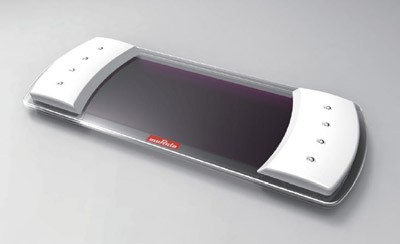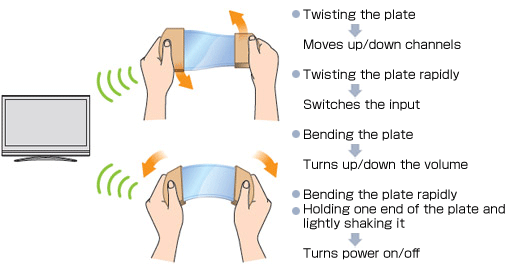Why change channels by clicking on buttons, when you could do the same thing by twisting your remote? Japan’s Murata Manufacturing Company obviously sees advantages in this approach and has created a prototype dubbed the “Leaf Grip Remote Controller” to showcase the idea. Flexing the battery-less device not only changes TV channels, but it also switches inputs, controls the volume, and turns the power on and off.
When a material generates electricity through a change in temperature, it is known as a pyroelectric effect. This quality can be beneficial in some applications, as the mere touch of a finger can generate a current. The Murata researchers, however, went out of their way to keep such an effect out of their remote. This is because the device incorporates twin flexible piezoelectric films, which generate a current when subjected to mechanical stress. Such films are typically also subject to a pyroelectric effect, however, which gets in the way of their being able to clearly detect mechanical stresses – such as being twisted, flexed or shaken.

While Murata isn’t disclosing how it eliminated the pyroelectric effect in its experimental remote, the company is at least showing us how it’s used. Twisting the remote slowly changes channels, while twisting it rapidly switches inputs. Bending it, on the other hand, turns the volume up or down, while holding it by one end and shaking it turns the TV on or off.
One of the films detects bending, the other one detecting twisting, while a flexible photovoltaic cell sandwiched between the two transparent films uses ambient light to power the device.

It brings Queen’s University’s Paperphone to mind. The experimental thin-film mobile phone’s menu is navigated by bending the entire device. Whether or not it or the Leaf Grip Remote Controller will ever take off with consumers is questionable, but the technology is certainly fascinating.
 Follow
Follow